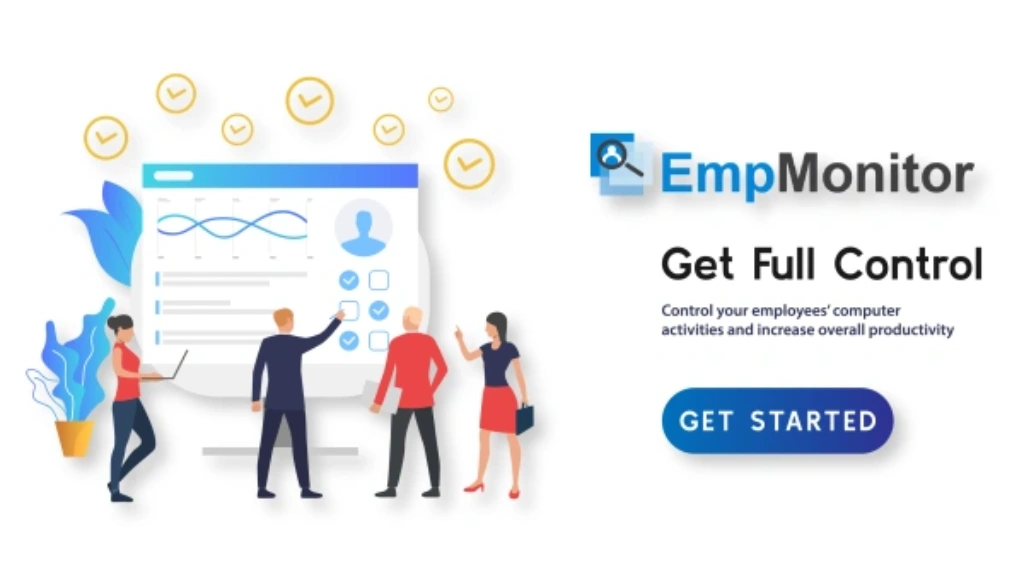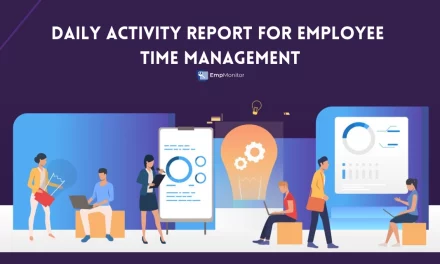The shift toward new work habits has created awareness about what people actually need to perform at their best. Many employees want flexibility, and many companies now recognize how much they stand to gain by supporting it. This shift is where the remote workforce enters the picture in a meaningful way. As businesses re-evaluate their priorities, the appeal of flexible arrangements grows stronger and sets the stage for deeper conversations about how work actually happens. Before exploring benefits and challenges, it helps to understand what this structure truly represents.
In a hurry? Listen to the blog instead!
Meaning Of A Remote Workforce

Why A Remote Workforce Matters For Employees?
For many employees, the remote workforce means they can manage their days without the stress of long commutes or rigid schedules. The ability to work in a comfortable space increases focus, energy, and consistency. People also save money on travel and daily expenses while gaining more control over personal routines. These small changes add up and affect job satisfaction in a big way. As employees experience this balance, companies begin to notice results that extend beyond individual well-being. The next step is understanding how employers benefit from this work model as well.
Why A Remote Workforce Matters For Employers?
The remote workforce gives employers access to talent far beyond their local area. Instead of hiring based on proximity, they can choose candidates based on skill and fit. Reduced office expenses, fewer distractions, and higher morale often lead to more consistent performance. When people feel trusted, they contribute with a stronger sense of purpose. This shift creates a cycle where satisfied employees produce better work, and companies see long-term gains. With that said, embracing this model also brings challenges, and understanding them prepares teams for smoother operations.
Challenges That Come With A Remote Workforce

Communication Systems That Strengthen Remote Teams
Clear communication holds everything together in a remote workforce. Without it, small misunderstandings quickly become bigger issues. Building a predictable communication structure helps everyone feel aligned, whether they are sharing updates, seeking help, or planning deadlines. The focus should be on simplifying conversations rather than overwhelming people with tools. When communication becomes easier, collaboration feels natural, and people begin relying on each other the way they once did in person. With communication addressed, trust becomes the next major pillar of any remote team.
Building Trust And Clear Expectations
Trust is the foundation of a strong remote workforce. Employees perform better when they know what is expected of them and feel confident in their roles. Leaders can offer clarity through well-defined responsibilities and measurable outcomes. Instead of focusing on constant supervision, teams thrive when expectations are transparent and performance is measured in meaningful ways. This approach helps remove assumptions and encourages a fair judgment of progress. Trust alone is not enough, though. For remote teams to stay healthy, work-life balance must remain a priority.
Supporting Healthy Work-Life Habits

Strengthening Team Connection
Human connection matters, and a remote workforce needs spaces where people can bond outside task updates. Virtual catch-ups, shared interest groups, casual chat channels, and small celebrations help people feel valued and included. When employees feel connected, collaboration improves naturally. These interactions build trust, help reduce isolation, and remind teams that they’re part of something bigger. A sense of belonging often encourages people to go the extra mile, and this social stability becomes essential for long-term remote operations. Growth support further strengthens this system.
Helping Employees Learn And Grow
Professional development keeps a remote workforce engaged and confident. Online courses, mentoring sessions, coaching opportunities, and skill-building workshops help employees improve at their roles and advance their careers. People want to feel challenged and supported, and consistent development opportunities help prevent stagnation. When companies invest in learning, employees reward them with commitment and stronger performance. At this point, many businesses begin to look for tools that simplify coordination and improve transparency without being intrusive. This is where a subtle mention becomes important.
A Practical Need For Better Visibility
As a remote workforce evolves, companies often notice the need for better clarity around productivity, hours, and task progress. Manual tracking can feel chaotic and unreliable, especially for growing teams or teams working across different time zones. Businesses want structure without pressure and visibility without micromanagement. This growing need creates a natural space for a reliable monitoring and productivity solution that supports both managers and employees. Here is where EmpMonitor enters the conversation gently, offering a balanced way to maintain workflow transparency.
How EmpMonitor Supports Remote Teams?

1. Time Tracking for Accurate Visibility
EmpMonitor records active work hours in real time, helping teams stay aligned without constant check-ins. This feature shows when tasks start and end, supports fair evaluations, and helps employees understand their own work patterns. It removes the pressure of manual logs and brings consistency across the entire team.
2. Productivity Insights for Smarter Decisions
The platform breaks down activity trends so managers can spot strengths, delays, and improvement areas. These insights help guide workloads, refine priorities, and support employees who may need assistance. Instead of micromanagement, teams get clear data that encourages better planning and balanced performance.
3. Activity Reports for Clear Workflow Tracking
EmpMonitor generates detailed reports that show which apps and websites are used during work hours. This helps managers understand daily workflows and ensures that projects move forward as expected. It’s a fair and simple way to maintain accountability without interrupting an employee’s routine.
4. Automated Screenshots for Added Transparency
For teams handling sensitive tasks, automated screenshots offer an extra layer of verification. They help maintain trust and clarity in environments where accuracy matters. This feature supports quality checks while still respecting a healthy working relationship between employees and managers.
5. Attendance Management for Global Teams
Remote teams often work across different time zones, and EmpMonitor’s attendance system adjusts seamlessly to these variations. Employees can log in and out with precision, reducing manual errors and bringing predictability to daily schedules. This helps companies coordinate deadlines, shifts, and collaborative tasks more effectively.
Together, these features give companies a dependable foundation for guiding their remote workforce, improving not just productivity but also confidence and teamwork.+
Hiring Talent Beyond Local Boundaries

Using Cost Savings The Right Way
A remote workforce reduces the need for large office spaces and daily operational expenses. Companies often redirect these savings toward better tools, employee benefits, or team wellness initiatives. Some organizations invest in training, mental wellbeing programs, or additional support resources. Others hire more talent to distribute work more evenly. Reinvesting savings strengthens the work ecosystem and enhances long-term stability. With financial resources used wisely, companies prepare themselves for the future of work in more meaningful ways.
Role Of Remote Monitoring In Team Structure
As teams expand, companies sometimes rely on remote monitoring to maintain clarity and structure. When implemented thoughtfully, this practice helps identify workflow patterns, eliminate bottlenecks, and ensure fair distribution of tasks. The goal should always be support, not stress. Balanced visibility helps managers guide their teams more effectively while helping employees track their own progress. This practice becomes even more relevant as work models continue to evolve in the coming years.
Work From Home Monitoring As A Support System

How The Future Shapes A Remote Workforce?
The future will continue shaping the remote workforce in ways that encourage autonomy, trust, and better resource allocation. More companies will adopt hybrid or fully remote setups, blending flexibility with structure. Technology will continue improving, making collaboration smoother and more intuitive. Leaders will take on bigger roles in guidance, empathy, and cultural development rather than relying on strict supervision. As these changes unfold, the importance of thoughtful strategies becomes clearer. With this direction set, a final wrap-up helps summarize the bigger picture.
Read More
Managing Remote Workers: Best Practices And 9 Essential Tips
How To Use Remote Workforce Management Software Efficiently In 2025?
A New Way Forward For Remote Teams
The remote workforce introduces a way of working that respects time, personal space, and professional growth. When companies support their teams with strong communication, fair expectations, and reliable tools, productivity rises naturally. Remote models thrive when leaders focus on trust, development, and wellbeing. As businesses adapt, the future looks more inclusive, balanced, and efficient. With the right structure in place, any company can build a team that grows together and stays connected no matter where they work.
Final Thoughts
A well-managed remote workforce can reshape how a company operates, collaborates, and grows. When communication stays clear, expectations stay reasonable, and support systems are thoughtfully structured, teams develop a rhythm that feels steady and dependable. This approach goes beyond simply completing tasks from different locations; it creates an environment where people work with greater clarity, confidence, and trust in the process.
What really makes a remote setup thrive is the balance between structure and flexibility. Organizations that invest time in planning, adopt reliable tools, and treat transparency as a non-negotiable standard often see stronger engagement and better outcomes. Over time, this consistency turns into a culture where remote teams aren’t just functioning well but genuinely succeeding. With the right mindset and a strategic framework, any business can create a model where long-term remote success becomes a natural extension of how the team works together.
FAQs
1. How can companies maintain strong data security when employees work from different locations?
Security improves when businesses use encrypted tools, device guidelines, multi-factor authentication, and consistent training. These steps reduce risks without slowing daily workflows.
2. What qualities help managers guide distributed teams effectively?
Leaders benefit from clear communication, patience, empathy, and the ability to set realistic expectations. These traits help them support their teams and maintain steady progress.
3. How do businesses keep virtual meetings productive?
Well-structured agendas, defined outcomes, shorter meeting durations, and clear follow-up steps keep discussions organized. Collaborative tools also help reduce confusion and keep everyone aligned.
4. Can a distributed team still build a strong sense of culture?
Yes. A shared culture forms through consistent values, recognition habits, open communication, and small team rituals. Physical distance doesn’t limit culture when people feel included.
5. What helps new employees adjust to remote roles quickly?
Structured onboarding, early check-ins, access to clear documentation, and active participation in team chats help newcomers settle in smoothly and understand expectations from day one.











